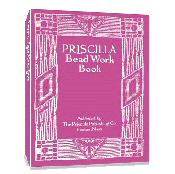Faggoting

Faggoting, no matter how you spell it (faggoting, faggotting, fagotting), is both useful and quite beautiful. It is used in joining two pieces of material by means of an insertion stitch. Victorian ladies used this most often on delicate lingerie. Silk, satin, linen and cotton are most suitable for this type of work. Thicker materials can also be faggoted together although this is done less often than in fine embroidery.
A great many stitches can be used as the insertion stitch. The stitches suggested to use are either crisscross or twisted type stitches.
The thread used varies according to the material or the purpose for which the faggoting is required. A lightly twisted embroidery thread or twisted silk is best used for fine embroidery, and stranded cotton and wool may be used for thicker, coarser materials.
In early Victorian times, the edge of the hem was first finished with a tiny hem or with over-sewing along the seam line once the hem had been turned under. To make a very strong edge, they would work two lines of over-sewing. As time progressed, ladies dispensed with the two lines of over-sewing.
To work:
Turn under the raw edges as if for an ordinary hem and tack place. hemmed or slip stitched these edges. If a narrow hem, they can be left just tacked, as the faggot stitch will keep the edges together. All stitches should be made as invisible as possible.
The edges of the material are then tacked on to firm paper, parallel to one another and about 1/8 inch apart. The tacking through to the paper holds the material in place while the Faggot stitching is being worked. The distance between the hems can vary, depending on the material used or the use to which the faggoting is put. No matter what the spacing is, it must be kept regular and at the same tension throughout the work piece.
Two types of faggoting are shown below.
Bar Faggoting
Join the thread to the bottom edge at left-hand side; about 1/8 inch of the hem is picked up at each side. The needle is now inserted into the top edge immediately above where the thread emerges, making a straight single thread across the gap as shown in A-1.

Click on picture to see more detail.
Twist the needle around this thread and bring it out a little way along the bottom edge, as in A-2.

Click on picture to see more detail.
To reach the position of the next stitch, make a tiny over-sewing stitch over the bottom edge, as in A-3.

Click on picture to see more detail.
Repeat this movement all along the seam.
Twisted Faggot
This is worked from right to left. Join the thread to the bottom edge, move about 1/8 inch to the left and make a stitch into the top edge, inserting the needle towards the gap. See B-1.

Click on picture to see more detail.
Move to the left for another 1/8 inch and inset the needle into the lower edge, bringing point out through gap, as in B-2.

Click on picture to see more detail.
Continue in this way all along the seam.
Return to top of Faggoting page.
Return to Embroidery Stitches page.
Return to Home page.



 433 pages!
433 pages!

